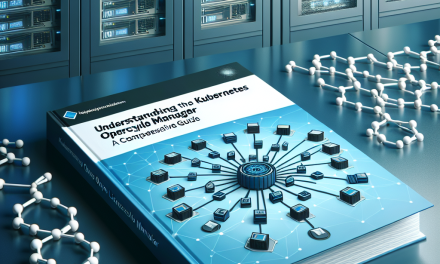Kubernetes, an open-source container orchestration platform, has revolutionized the way we deploy, manage, and scale applications. With its ability to automate the process of deploying containerized applications, it has become the go-to solution for many organizations looking to leverage cloud-native technologies. One of the most powerful features of Kubernetes is its extensibility, particularly through Custom Resource Definitions (CRDs). This article delves into the capabilities and benefits of CRDs, showcasing how they empower developers and administrators to tailor Kubernetes to their specific needs.
What are Custom Resource Definitions?
At its core, Kubernetes is designed to manage objects such as Pods, Services, and Deployments. However, organizations often find that their use cases require additional resource types beyond the standard ones. This is where Custom Resource Definitions come into play.
CRDs allow developers to create their own custom resources, enabling Kubernetes to manage these resources just like built-in objects. By defining a CRD, you can extend the Kubernetes API and integrate your custom logic into the orchestration platform.
Why Use Custom Resource Definitions?
-
Extensibility: One of the primary advantages of CRDs is their ability to extend the Kubernetes API. By creating custom resources, developers can tailor Kubernetes to suit unique application requirements, enabling them to manage complex workflows and data structures with ease.
-
Declarative API: Kubernetes promotes a declarative approach to application management. By utilizing CRDs, you can create resources that follow the same declarative pattern, making it easier to manage state and configuration.
-
Rich Ecosystem: CRDs are part of a larger ecosystem of Kubernetes resources. This means you can leverage existing Kubernetes tools and frameworks, such as Controllers, to manage your custom resources. This integration enhances the overall functionality and lifecycle management of your applications.
- Community and Support: Given Kubernetes’s popularity, there is a robust community around it, and many developers are already leveraging CRDs. Resources and documentation are readily available from the Kubernetes documentation and various community forums, making it easier to find help and best practices.
How to Create a Custom Resource Definition
Creating a CRD is straightforward. Below are the key steps involved in defining and deploying a CRD in your Kubernetes cluster:
-
Define the CRD Manifest: This includes specifying the API version, kind, metadata, and the specifications for the custom resource. Here’s a simple example of a CRD definition:
apiVersion: apiextensions.k8s.io/v1
kind: CustomResourceDefinition
metadata:
name: examples.mydomain.com
spec:
group: mydomain.com
versions:
- name: v1
served: true
storage: true
schema:
openAPIV3Schema:
type: object
properties:
spec:
type: object
properties:
foo:
type: string
scope: Namespaced
names:
plural: examples
singular: example
kind: Example
shortNames:
- ex -
Deploy the CRD: Use the
kubectl applycommand to deploy your CRD to the Kubernetes API server:kubectl apply -f my-crd.yaml -
Create Custom Resources: Once the CRD is created, you can start defining custom resources that conform to the specifications outlined in the CRD.
apiVersion: mydomain.com/v1
kind: Example
metadata:
name: my-example
spec:
foo: "Hello, Kubernetes!" - Interact with Custom Resources: Just like any other Kubernetes object, you can create, read, update, or delete your custom resources using standard
kubectlcommands.
Use Cases for Custom Resource Definitions
The potential applications of CRDs are nearly limitless. Here are a few common use cases where CRDs can greatly enhance Kubernetes functionality:
-
Operator Framework: Developers can leverage CRDs to build Kubernetes Operators, which automate the management of complex applications and services. This is particularly useful for stateful applications like databases.
-
Custom Workflows: Businesses with unique workflows can define custom resources to manage specific tasks within their applications, thus streamlining deployment and operational processes.
- Managing Configuration: CRDs can be used to represent complex configurations or application metadata, allowing for better management of settings and environment variables.
Conclusion
Kubernetes Custom Resource Definitions are a powerful feature that enables developers to extend Kubernetes functionality without altering its core. By utilizing CRDs, organizations can build tailored solutions that meet their specific requirements, automate processes, and manage complex application architectures effectively.
As Kubernetes continues to evolve, integrating CRDs into your workflows is an excellent way to harness the full power of this container orchestration platform. To learn more about getting started with Kubernetes and CRDs, check out the comprehensive Kubernetes documentation.
By employing CRDs, you can not only enhance your Kubernetes experience but also transform the way you build and manage applications in a cloud-native landscape. Get ahead of the curve—adopt Custom Resource Definitions today!





